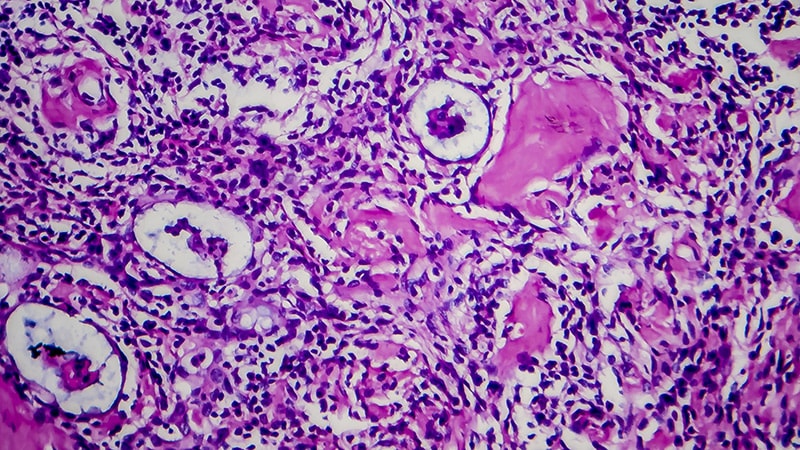TOPLINE:
The programmed cell death protein 1 (PD-1) inhibitor drug sintilimab in combination with the standard chemotherapy regimen of ifosfamide, carboplatin, and etoposide (ICE) shows significant benefit as a second-line treatment for classical Hodgkin lymphoma (HL) vs ICE chemotherapy alone, with relatively high rates of complete responses and favorable progression-free survival (PFS).
The results are from the phase 3 ORIENT-21 trial, conducted in China, which is believed to represent the first randomized study of a PD-1 inhibitor plus chemotherapy compared with chemotherapy alone in the challenging second-line setting of classical HL.
METHODOLOGY:
- The study included 81 patients with classical HL who failed first-line standard chemotherapy, with a median age of 33, including 12.3% over the age of 50.
- Of the patients, 23.5% had stage III disease, and 35.8% had stage IV disease; 56.8% were relapsed, and 43.2% were refractory.
- After a safety run-in phase, patients were randomized 1:1 to treatment either with sintilimab or placebo plus ICE for six cycles.
- Those with disease progression continued either on sintilimab or placebo monotherapy.
TAKEAWAY:
- With a median follow-up of 38.4 months in the modified intention-to-treat (mITT) population (n = 71), sintilimab plus ICE showed a significantly higher complete response (CR) rate of 61.8% compared with 32.4% with ICE alone (P = .0295).
- Consistent results were observed in the ITT population of 81 patients, with a CRR of 61.4% vs 32.4% (P = .0105).
- The median duration of complete response was not reached in the sintilimab plus ICE arm, while it was 20.7 months in the placebo plus ICE group.
- The median PFS in the ITT population was not reached with sintilimab plus ICE vs 9.0 months with placebo and ICE (HR, 0.48), with more favorable PFS among CR patients vs non-CR patients in each treatment arm.
- Treatment-emergent adverse events (TEAEs) were similar in both arms (18.6% and 13.5%, sintilimab plus ICE and ICE alone, respectively), with no TEAEs resulting in death.
IN PRACTICE:
“As the second-line treatment for classical Hodgkin lymphoma, sintilimab plus ICE significantly improved complete response rates and showed a trend of improved PFS compared with placebo plus ICE,” said first author Peng Liu, of the National Cancer Center/National Clinical Research Center for Cancer/Cancer Hospital, Chinese Academy of Medical Sciences, Beijing, China.
The results “may provide data for a stem-cell transplant-free approach for some patients in second-line classical Hodgkin lymphoma,” commented Sarah C. Rutherford, MD, associate professor of clinical medicine at Weill Cornell Medicine in New York City, a discussant for the study at the meeting.
SOURCE:
The study, abstract #7007, was presented at the American Society of Clinical Oncology (ASCO) 2025 annual meeting in Chicago.
LIMITATIONS:
Longer follow-up is needed, “especially to understand the impact of no autologous stem cell transplantation,” Rutherford noted. Results from a larger sample size are warranted, the authors added. As the study was conducted in China, generalizability of the results to other populations should be considered.
DISCLOSURES:
The study was funded by Innovent Biologics (Suzhou) Co., Ltd., in China.
Rutherford’s disclosures include relationships with Abbvie, ADC Therapeutics, Bristol Myers Squibb, Genmab, Incyte, Karyopharm Therapeutics, Kite Pharma, Pfizer, and Seagen.
Source link : https://www.medscape.com/viewarticle/hl-second-line-sintilimab-plus-chemo-bests-chemo-alone-2025a1000g08?src=rss
Author :
Publish date : 2025-06-16 08:14:00
Copyright for syndicated content belongs to the linked Source.
